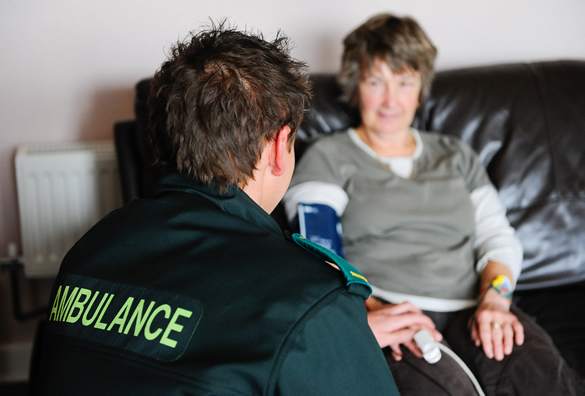Clinical quality indicators

All ambulance services in England are measured by, and report against, the clinical quality indicators shown below. This allows a comparison of our data with that of other ambulance services in the country. The Trust went live with new response standards on 18th October 2018 and the indicators have been updated. This means comparisons against all UK ambulance service performance data may not be possible until these standards are introduced nationally this year.
Briefly, the new CQIs are:
ST-elevation myocardial infarction (STEMI)
ST-elevation myocardial infarction is a type of heart attack resulting from a blockage in a coronary artery. This monitors the number of patients who receive best practice care in the management of a heart attack. The gold standard treatment is primary angioplasty, carried out at a specialist centre. This is a procedure to insert a stent (plastic bridge) into the artery to remove the blockage and keep the artery open). We report nationally on the proportion of patients receiving these treatments within the target timescales.
Return of Spontaneous Circulation (ROSC)
This indicator monitors the number of patients who suffer a cardiac arrest (heart stopped), and who are subsequently resuscitated and the heart restarts prior to their arrival at hospital.
Cardiac arrest - Survival to discharge (StD)
Following on from the second indicator, this monitors the number of patients who leave hospital alive after they have had an out-of-hospital cardiac arrest.
Management of Stroke
This requires ambulance services to measure the time it takes from the 999 call, to the time it takes those FAST positive stroke patients to arrive at a specialist stroke centre so that they can be rapidly assessed for treatment called thrombolysis.
Proportion of calls closed with telephone advice or managed without transport to A&E (where clinically appropriate)
This reflects how the whole urgent care system is working, rather than simply the ambulance service or A&E, as it will reflect the availability of alternative urgent care destinations (for example, walk-in centres) and providing treatment to patients in their home
Re-contact rate following discharge of care (i.e. closure with telephone advice or following treatment at the scene)
If patients have to call 999 a second time, it is usually because they are anxious about receiving an ambulance response or have not got better as expected. Occasionally it may be due to an unexpected or a new problem. To ensure ambulance services are providing safe and effective care the first time, every time, this measures how many callers or patients call us back within 24 hours of the initial call being made
Call abandonment rate
This indicator will ensure that we and other ambulance services are not having problems with people phoning 999 and not being able to get through
Time taken to answer calls
It equally important that if people/patients dial 999 that they get call answered quickly. This indicator will therefore measure how quickly all 999 calls that we receive get answered
Service experience
All ambulance services will need to demonstrate how they find out what people think of the service they offer (including the results of focus groups and interviews) and how we are acting on that information to continuously improve patient care
Ambulance response time
This measures the speed of all ambulance responses to a patient and is recorded as a mean target. Find out more about what happens when you call 999?
Ambulance Clinical Quality Indicators (ACQIs) by CCG area
Download our ACQIs by STP for 2019-2020
Download our ACQIs by CCG for 2018-2019
